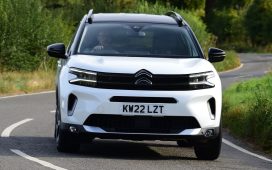U.S. Rep. Mark DeSaulnier (D-Concord) was in San Ramon last week for an in-person discussion on transit, traffic and the future of commuting in the present era in the growing city that became part of his district in redrawn boundaries following the most recent census.
While the longtime congressman has long been a part of planning and policy making in Bay Area transit — including time on the Contra Costa Transit Authority early in his career, prior to focusing on transit related issues at the state level as chair of California Senate’s Housing and Transportation Committee and currently at the national level on the House Committee on Transportation and Infrastructure — the town hall on July 11 was among his first public efforts to address transit challenges particular to the San Ramon Valley.
“They moved us out of the 80 corridor and then all of East County and down into Dublin — you see we’ve got most of Dublin and we’ve got all of San Ramon,” DeSaulnier said at the start of the night’s discussion, while describing the recently redrawn map for his congressional district 10 that was finalized early last year. “Prior to that I went to the Danville border, so I didn’t have Dublin or San Ramon.”
With the district now consisting of two transit hubs on opposite ends of the San Ramon Valley portion of the I-680 corridor — Walnut Creek and Dublin — DeSaulnier navigated a range of topics relevant to San Ramon Valley commuters now within one congressional district.
“I thought it would be appropriate having the first in-person — now being seven months in representing this area — in San Ramon to talk about something about transportation,” DeSaulnier said.
One question from the audience was about the plausibility of securing federal funding for a BART monorail through the San Ramon Valley with stops in Alamo, Danville and San Ramon, which DeSaulnier said had been part of the original vision in the rail agency’s earlier days prior to facing pushback locally.
“When you look at the original proposal for BART before it was built, part of it was connecting the Walnut Creek BART Station down the Iron Horse corridor to Dublin,” DeSaulnier said. “To be perfectly honest, the community down here didn’t want it, and now it’s a lovely trail.”
He added that there are plans to bring something like the monorail connecting the two major BART stations in place, but that funding has continued to be a challenge.
“The alternative to that was putting it as you’ve described it down 680, down the median for most of it, so there are plans to do that, but again, it’s the funding,” DeSaulnier said.
San Ramon resident Mike Conklin asked what DeSaulnier and others in Congress would be doing to incentivize the use of home offices and the continued opportunity for remote work, which had already been popular at some Bay Area companies prior to massive increase in remote work during the COVID-19 pandemic.
“My feeling is we can’t simply continue to widen freeways to support jobs-housing balance, which continues to defeat the opportunity to reduce carbon emissions,” Conklin said. “I think the opportunity that COVID showed us is that we can work efficiently and effectively from home offices.”
“The real question is why do we have to constantly put our bodies and brains in a metal bucket with wheels to do good, productive work,” Conklin added. “Is anyone in Congress talking about this?”
DeSaulnier said that he for one was passionate about the topic of remote work and reducing commute times via his role in Congress, and was excited about the possibilities raised by the ubiquity of remote work during the early years of the COVID-19 pandemic and its continued popularity.
“It’s all around the country and around the world, but right here in the Bay Area is probably the prime model of people saying, ‘I’m not doing that commute again,'” DeSaulnier said.
He added that the increase in time at home was particularly important for families, with parents being able to spend more time with their children when not on the road for lengthy commutes five days per week.
“This is about quality of life for future generations,” DeSaulnier said.
While the COVID-19 pandemic led to a broad restructuring of workplace and office practices in some instances that enable more flexibility and reduce commute times, it came following a peak in “megacommuters” who traveled more than 90 minutes each way for work — the number of which more than doubled nationally, from 3% of commuters in 2009 to 6.6% of commuters in 2018.
In addition to impacting the quality of life for individuals and families, DeSaulnier pointed to issues with carbon emissions and traffic that he said make pre-pandemic commute and work practices unsustainable in the present day.
“You can tell we’re having huge problems — the people who were telling us, the scientists 25, 30 years ago, about carbon emissions and fossil fuel burning was going to be a problem,” DeSaulnier said. “The concern now is the modeling as aggressive as it is in California we might have underestimated.”
While public transit has been heralded as a way of reducing carbon emissions and fossil fuel use, plus reducing traffic and enabling commutes in urban areas, DeSaulnier pointed to challenges at the local, state and federal levels to transit funding and infrastructure in the wake of reduced ridership spurred by the earlier days of the pandemic.
“We know that particularly for BART, if it’s reliable, clean, people will take it,” DeSaulnier said. “But not in this environment right now.”
“It’s not been amongst the higher performing heavy rail systems in the United States or the world,” he added.
Specifically at the state level, California’s transit systems are facing a fiscal cliff as agencies struggle with reduced ridership and revenue, with $1.1 billion recently set aside in the state budget to support transit agencies.
DeSaulnier said discussions would continue following last week’s town hall, with his office continuing to seek questions and comments on transit from constituents and making plans for further talks on the topic in the near future.
The full video of last week’s town hall is available at https://fb.watch/lSQlWN7XZm/.










